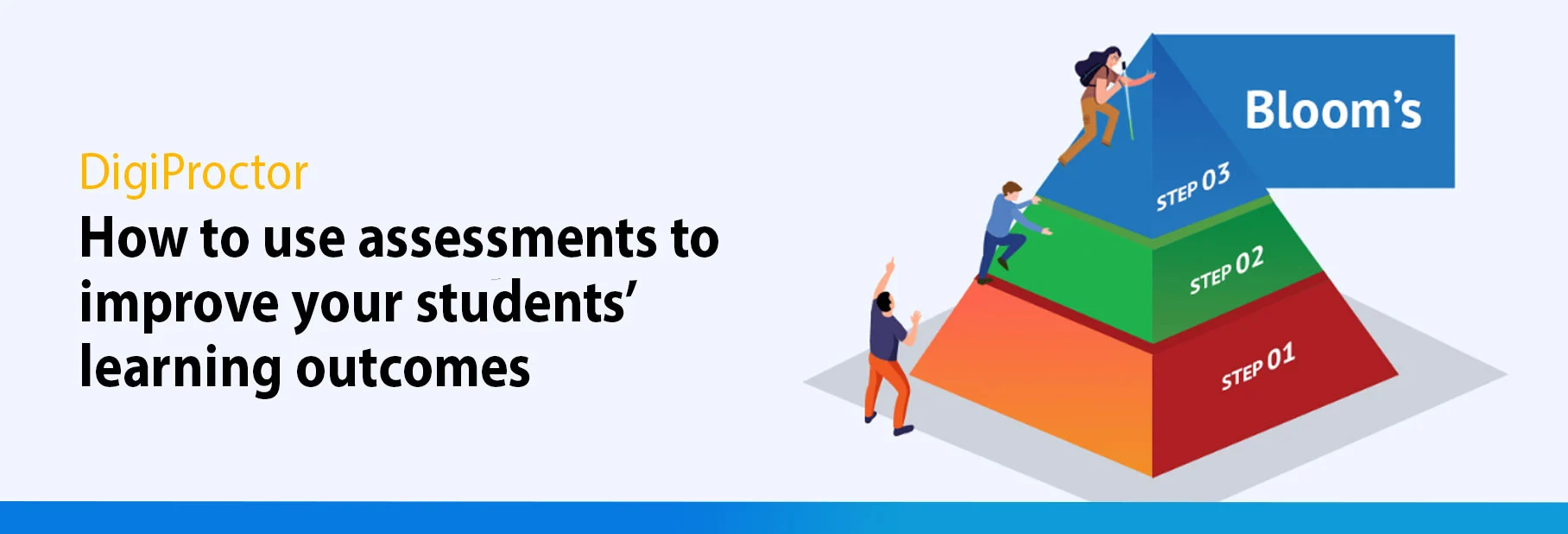
Assessments can provide students feedback on their strengths and weaknesses - which in turn can influence their learning behaviour. It has been confirmed that the majority of students regard assessment as the most important aspect of a course, and consequently, they use it to guide and frame their learning.
Assessments also provide the teaching faculty feedback and insights on their students’ depth of learning and their breadth of learning. This can help them reorient their teaching methods if needed, to better the learning outcomes.
Depth of Learning

Assessments can help achieve better learning outcomes by discovering the depth of learning of the students – are they merely recalling factual information through memorization? or do they understand concepts? and can they apply the concepts in real world situations?
Digiproctor provides feedback on the depth of learning
While assessments can provide valuable feedback - the challenge which teaching faculty typicallyface is ‘How to analyze the volumes of data that gets generated in an assessment? And how to extract the right insights?’ Typically, teaching faculty is hard pressed on time and bandwidth to undertake this task manually – and they need the right technology to help. This is where Digiproctor steps in. Digiproctor can automate the entire process of analysing assessment data by converting it into a ‘one-click’ activity

Digiproctor allows the faculty to tag questions aligned to Bloom’s taxonomy - Recall, Understand and Apply. Once done, Digiproctor can, on the press of a button, automatically present the faculty with insightful analytics of the depth of the students learning - which can help faculty reorient their teaching as required.
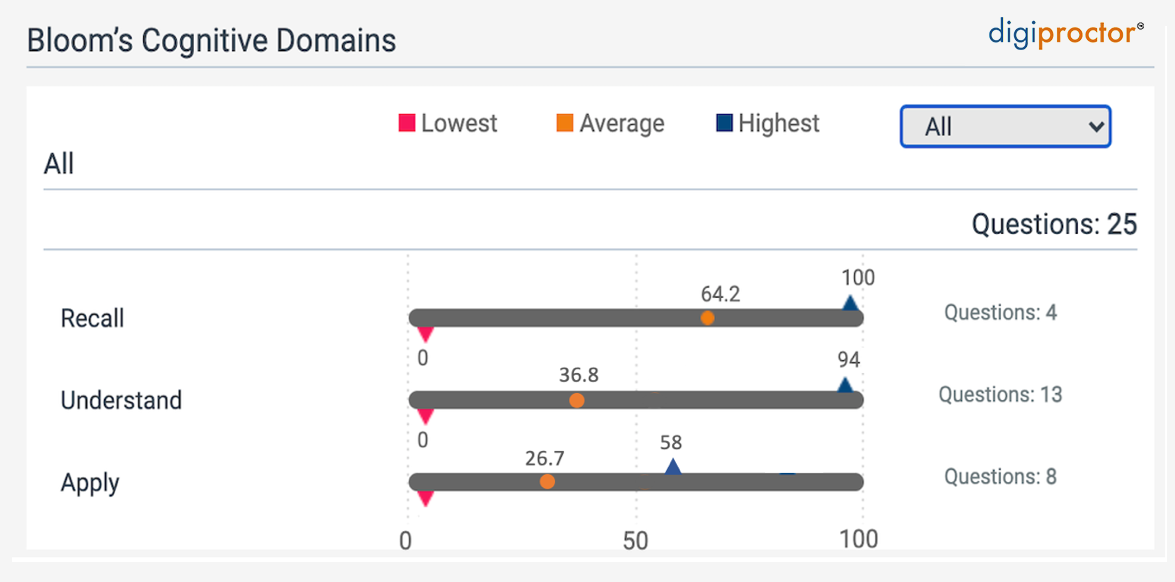
The table depicts the analysis of the assessment data for depth of learning as aligned to Bloom’s taxonomy. Out of 25 questions, 4 measured recall ability, 13 tested the students’ competence in understanding concepts and 8 tested whether they could apply the concepts in situations.
From the analysis it emerges that the capability of the class to Apply their learning needs improvement – and faculty can emphasize more on application of concepts in their teaching.
Digiproctor also allows the faculty to gauge an individual student’s depth of learning. For this, the faculty can select the student they want to analyze, and Digiproctor will instantly display where the student stands vis-à-vis the class.
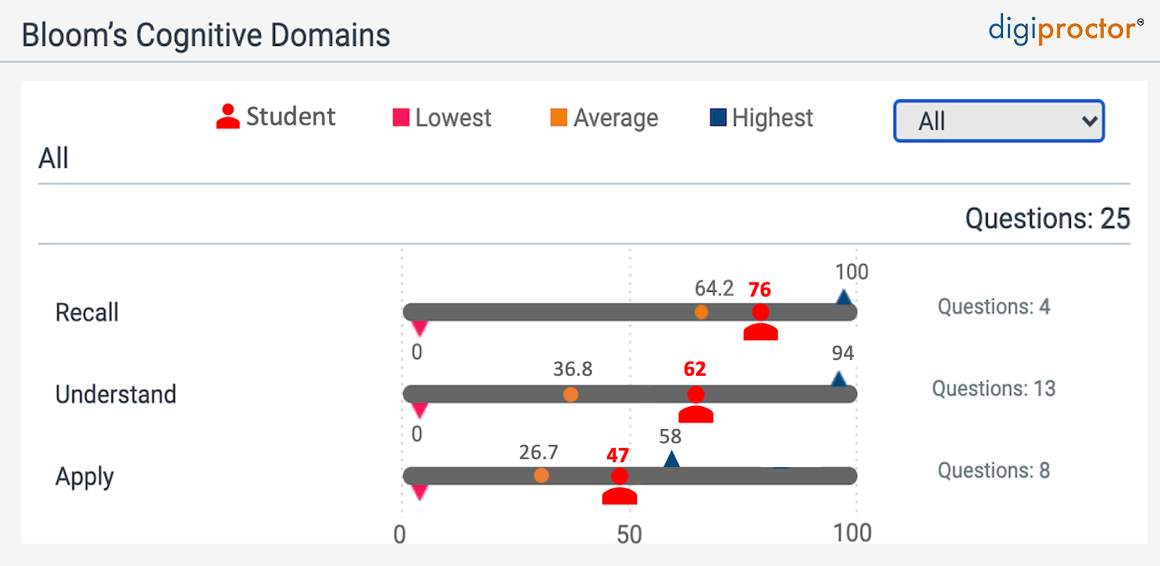
The table depicts how the student has performed as compared to the class. From the analysis it emerges that the student’s depth of learning is much better than the class average.
Breadth of learning
Assessments can help achieve better learning outcomes by discovering the breadth of learning of the class – what is their extent and grasp of topics and sub-topics at a granular level within the curriculum?
Assessments can provide valuable feedback to the teaching faculty by identifying topics which the class is weak or strong in – and this can help them optimize their teaching methods for the identified topics. Assessments also enable the teaching faculty to identify an individual student’s strength and weakness related to different topics, which helps them to suggest appropriate learning activities for the student.
Digiproctor provides Faculty feedback on the breadth of learning
Digiproctor allows the faculty to tag questions categorized on subject, topic and sub-topic. Once done, Digiproctor can present the faculty with insights into the topics that students are strong or weak in - which can help them to reorient their teaching of the identified topics to achieve better learning outcomes.
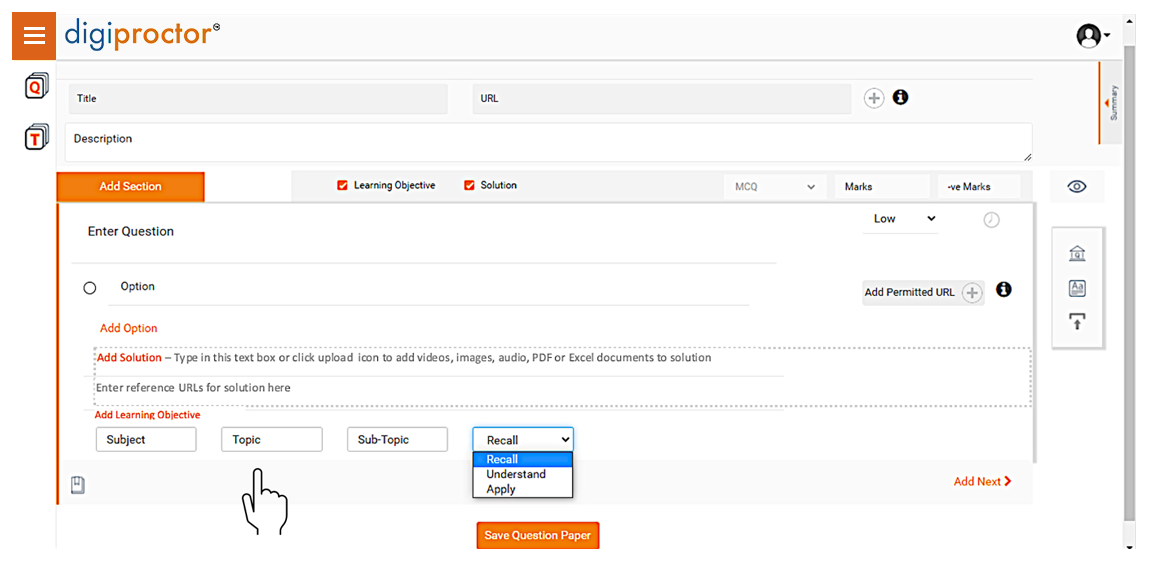
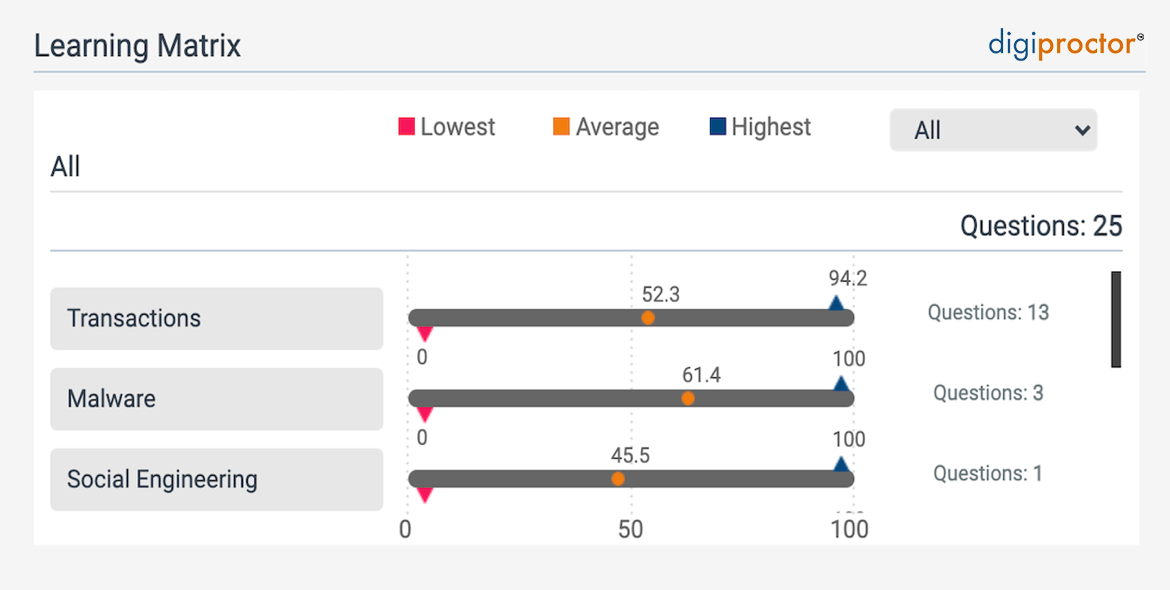
The table depicts analysis of how the class has performed in each of the topics (transactions, malware and social engineering).
Digiproctor also allows the faculty to gauge an individual student’s grasp of different topics. The faculty can select the student and Digiproctor will instantly display where the student stands vis-à-vis the class in different topics.
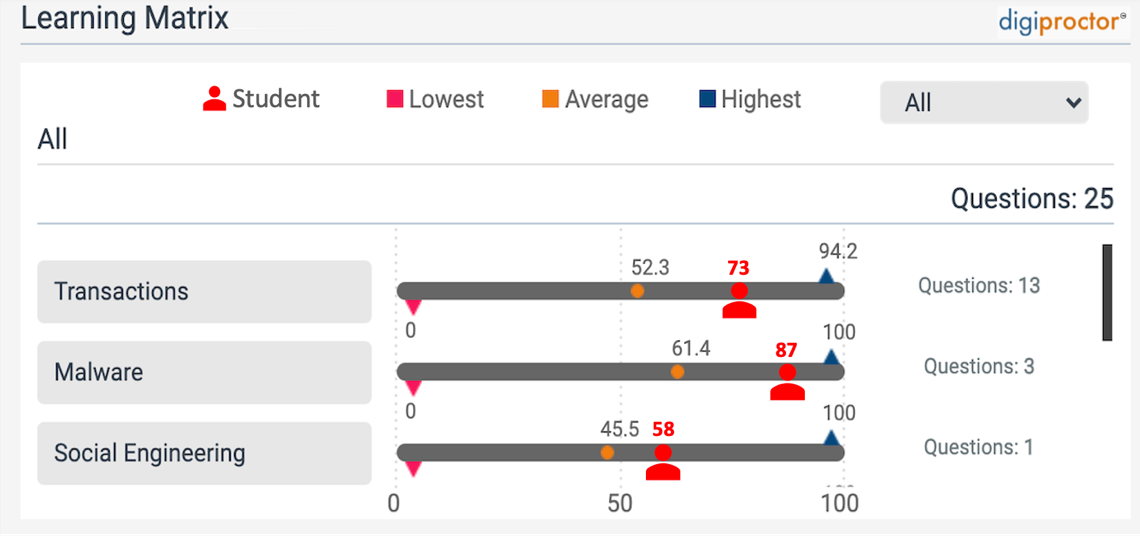
The table depicts how the student has performed in each topic (transactions, malware and social engineering) as compared to the class.